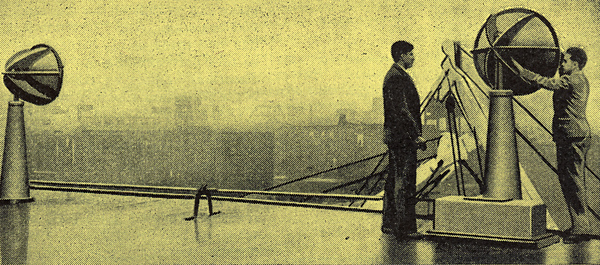|
This year marks the end of our first quarter-century and it is time for a backward glance. And a very appropriate time, as it happens: technical development was moving rapidly into Phase III, the era of high-definition television, industrial electronics, microwaves, radar and pulse techniques. Phase I had been the evolution of spark telegraphy on medium and long waves. Phase II, coming to an end in 1936, had began with the practical development of the amplifying and oscillating valve in 1911-1913, followed by radio-telephony, broadcasting, the full exploitation of the multi-mile wavelengths and then of those rich bonanzas the HF and VHF frequency bands; also the start of electronics for scientific purposes. Most of this progress had been made possible by valve improvements; our contributor, 'Cathode Ray', produced detailed support for the assertion that 92 valves of the 1921 type would be needed to provide the performance of the typical five-valve broadcast receiver of 1936. And a resourceful designer, well primed with the accumulated knowledge of 1936, would have been needed to achieve that performance.

Radar: SFR 'obstacle detector' fitted in the liner Normandie (1936)
A quick glance through our 1936 volume shows how fast radio technology was then moving into modern times: The BBC's London television station started the world's first regular high-definition service; the French SFR company introduced the 'obstacle detector', a non-pulse radar device; 'plumbing' was coming in and waveguide theory was treated; there was a number of articles on electronics; an editorial plea was made for the abolition of spark transmission.
A quarter-century's progress in wireless telegraphy; the Queen Mary on her maiden voyage handled as many words of traffic in the few day of the crossing as the great transatlantic station Clifden had averaged in two months in 1910/1911.
|